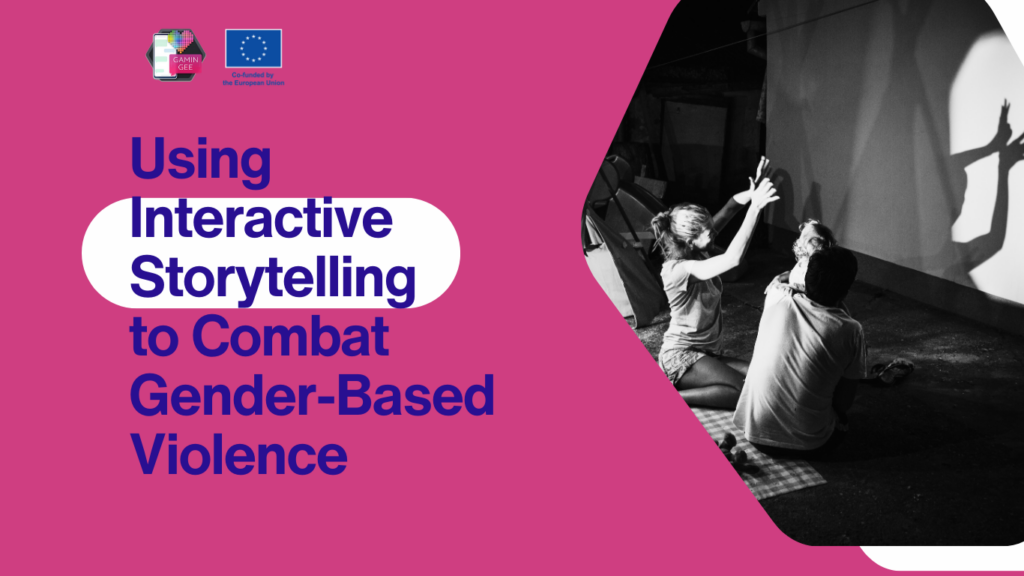
Gender-based violence remains a pervasive issue worldwide, affecting individuals of all ages, genders, and backgrounds. In recent years, there has been a growing recognition of the power of interactive storytelling as a tool for raising awareness, promoting empathy, and ultimately combating gender-based violence. Drawing inspiration from pioneering initiatives such as the GaminGEE project, this article explores how interactive storytelling can be harnessed to address this critical issue.
Engagement through Narrative Immersion:
Interactive storytelling engages participants in immersive narratives where they can step into the shoes of different characters and explore diverse perspectives. By experiencing the story firsthand, participants develop a deeper understanding of the complexities of gender-based violence and its impact on individuals and communities. (1)
Empowerment through Choice and Agency:
Interactive storytelling empowers participants to make choices and decisions that shape the outcome of the narrative. By allowing individuals to explore different pathways and consequences, interactive storytelling promotes critical thinking and encourages reflection on the role of agency in preventing and responding to gender-based violence. (2)
Building Empathy and Understanding:
Interactive storytelling fosters empathy by allowing participants to connect emotionally with the characters and situations depicted in the narrative. Through interactive experiences, individuals can develop a deeper understanding of the lived experiences of survivors and the challenges they face in seeking support and justice. (3)
Educational Tools for Prevention and Intervention:
Interactive storytelling can serve as a powerful educational tool for preventing gender-based violence and supporting survivors. By incorporating educational content into interactive narratives, participants gain knowledge about consent, healthy relationships, and available resources for survivors. (4)
Community Engagement and Advocacy:
Interactive storytelling provides a platform for community engagement and advocacy around issues of gender-based violence. By sharing interactive stories through digital platforms, social media, and community events, initiatives can raise awareness, spark conversations, and mobilize support for prevention and intervention efforts. (5) (6)
Interactive storytelling holds immense potential as a tool for combating gender-based violence by engaging participants in immersive narratives, empowering them with choice and agency, building empathy and understanding, providing educational tools for prevention and intervention, and fostering community engagement and advocacy. By leveraging the insights and methodologies of innovative initiatives like the GaminGEE project, we can harness the power of interactive storytelling to create a more just, equitable, and violence-free world for all.
References:
- Jenkins, H. (2006). Convergence Culture: Where Old and New Media Collide. New York University Press.
- Lupton, D. (2017). Digital Sociology. Routledge.
- Miller, C. (2019). The Digital Humanities and Interactive Media: An Introduction. Bloomsbury Academic.
- National Coalition Against Domestic Violence. (n.d.). Tools for Social Change.
- Simon, B., & Anderson, J. (2014). Building a Campus Culture of Consent: A Guidebook for Campus-Based Sexual Assault Prevention and Education. National Sexual Violence Resource Center.
- https://wi-her.org/the-power-of-storytelling-reflections-on-my-work-in-gbv-prevention-response/



Leave A Comment